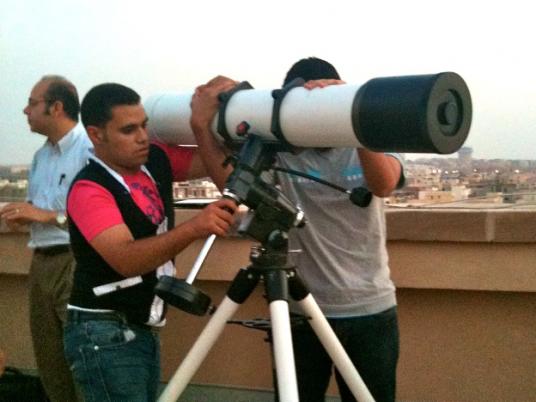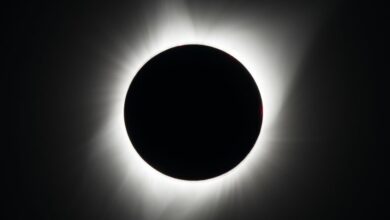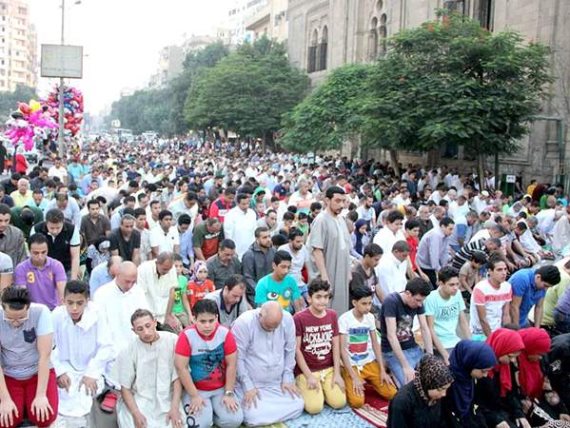
Mohamed Suleiman says he is 80 to 90 percent sure he saw the crescent moon on Thursday night, which marks the beginning of the month of Ramadan.
“I was just looking to the horizon, and I saw this spot that was blinking. And there are no stars in the horizon so it must be something, it must be the moon,” he says.
Suleiman, a Sharqiya native who is one of a large group of active participants that come to American University in Cairo observatory events,* gathered with about 25 other people on the rooftop of the Abdul Latif Jameel building at AUC’s New Cairo campus to try to spot the moon through telescopes.
The first day of Ramadan is not known until the night before fasting begins, confirmed only with the sighting of the crescent moon.
The event was sponsored by the AUC Observatory and the Science Outreach Program, and was led by Dr. Alaa Ibrahim, assistant professor of space astrophysics at AUC.
“Scientifically, on an astronomical basis, we are confident that the moon has been born… it is within the visibility conditions that would allow multiple countries to see it. And we are just getting the word that Saudi Arabia has announced it,” Ibrahim says.
Ibrahim gave a short lecture prior to the Ramadan crescent moon sighting about the importance of the moon for life on Earth.
Holding a plastic moon littered with craters, Ibrahim tells the audience that a giant asteroid struck the Earth when it was only 10 million years old. After the impact, the Earth tilted 23 degrees, and debris from the asteroid became the moon, he says.
“Not many people know these essential features that the moon contributes every day to life on planet earth,” says Ibrahim. “The four seasons are caused by the axial tilt of the Earth. Without that, we would have only one season.”
Additionally, Ibrahim explains, the gravity of the moon makes the Earth’s rotation smooth and stable, preventing it from wobbling like a top.
Chuckling, he adds that life on Earth without the moon “would be like living on a roller coaster.”
But that’s not all the moon contributes to life on planet Earth. Ibrahim says the impact of the asteroid that created the moon was so strong that it brought metals and minerals from the innermost core of the Earth to its surface.
“This is how we extract iron, copper, gold, and silver. Imagine the human situation built on only wood and paper,” Ibrahim says.
According to Ibrahim, the moon is also drifting away from the Earth by an inch and a half every year. “If we trace back, in the ancient times our ancestors used to see the moon six or seven times larger than the way we see it, because it was much closer.”
Ibrahim stressed the importance of doing public events through the science outreach center.
“The reason we do the public sighting of the Ramadan crescent is to really take advantage of the cultural value of those occasions to bring awareness to people… for them to appreciate the role of science and how the cosmos is actually making a genuine contribution to life on earth,” he says.
One participant, Houda, says she appreciated the event, and wanted to bring her kids to introduce them to the concept of moon sighting before Ramadan.
“We never had the moon sighting ourselves before. We usually read in the newspapers that it has been sighted and we are going to fast the next day. But seeing it ourselves, it’s something, even for us as adults,” she says.
Her young daughter seems to agree. When asked if she liked the event, she smiles shyly. Nodding her head, she gives an enthusiastic “yes!”
Egypt's National Research Institute of Astronomy and Geophysics confirmed that Ramadan begins on 20 July, according to state-run Al-Ahram newspaper.
* This article was amended on 21 July 2012. It previously stated that Mohamed Suleiman is an AUC student.




